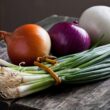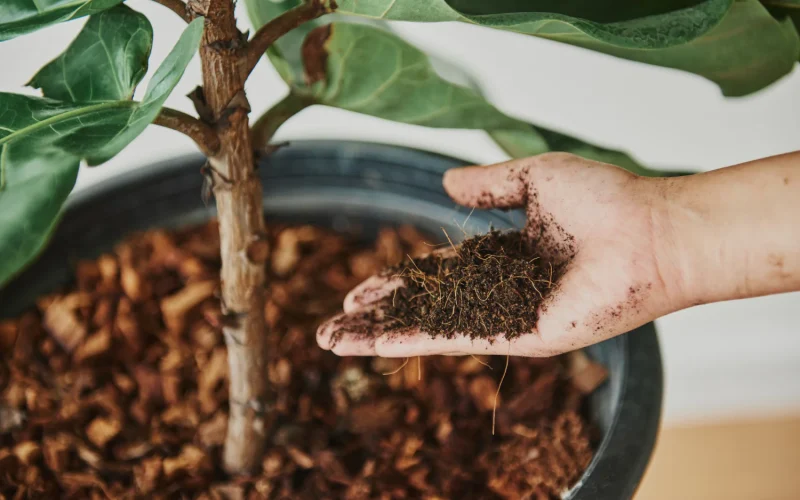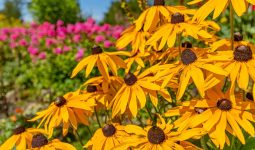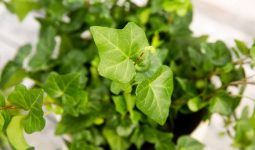Houseplants bring life and brightness to our homes but need more than just water to flourish.
Fertilizers give them the essential nutrients they can’t get from soil alone, ensuring healthy growth and vibrant leaves.
Choosing the best fertilizer for your houseplants can greatly affect their health and appearance.
There are a few critical things to consider when picking the right fertilizer.
First, you need to know what type of houseplant you have, as different plants have different nutritional needs.
Pay attention to the NPK ratio (Nitrogen, Phosphorus, and Potassium) on the label, as these are the primary nutrients plants need.
Also, consider whether you prefer liquid, granular, or slow-release forms.
We tested a range of fertilizers to find out which ones provide the best results for various houseplants.
Best Fertilizers for Houseplants
We’ve rounded up the best fertilizers to keep your houseplants healthy and thriving.
Let’s check out our top picks so you can find the perfect match for your green friends.
Miracle-Gro Indoor Plant Food

A must-have for anyone looking to give their indoor houseplants a quick and effective nutrient boost.
Pros
- Quick results
- Easy to use
- Suitable for all indoor plants, including edibles
Cons
- Requires weekly application
- Packaging could be improved
- Might not last long for larger collections
We’ve tested the Miracle-Gro Indoor Plant Food on various houseplants, and it really shines in terms of ease of use.
Simply squirt it directly into the soil or mix it with water, and you’re good to go.
We noticed our plants perking up in just a few days, with deeper green leaves and more vibrant growth.
One of the standout features is its versatility. Whether you’ve got a windowsill herb garden or a jungle of leafy houseplants, this product works wonders.
It’s great to have one solution for all our plant needs, including edibles.
The need for weekly application is a bit of a commitment, and we did find that the packaging wasn’t the best.
However, the positive results were undeniable. This product is effective, convenient, and a staple in our plant care routine.
Big Green Leaves Fertilizer

This fertilizer is great for boosting the health and growth of our houseplants.
Pros
- Provides essential nutrients
- Easy to use
- Safe for continuous use
Cons
- Might leave white deposits
- Requires frequent application
- Can be messy if not stored properly
Big Green Leaves Fertilizer made a noticeable difference in our houseplants.
Their leaves turned a deeper green, and they seemed much healthier overall.
Mixing the fertilizer is simple with the included scoop, which saves us time.
We like that it’s gentle and doesn’t burn the plants, even with regular use. Plus, it’s versatile enough for different types of plants and growing methods.
One downside is the white mineral deposits we noticed on the leaves after using tap water.
It’s something to keep an eye on, especially if you have sensitive plants. Despite this, the positive results make it worth trying.
Jobe’s Houseplant Food Spikes

These fertilizer spikes are a game-changer for effortless indoor plant care.
Pros
- Simple to use
- Promotes plant health
- Long-lasting effects
Cons
- Need frequent replacement for many plants
- Not suitable for all plant types
- Packaging could be more eco-friendly
We love using Jobe’s Houseplant Food Spikes for our indoor plants. The ease of just pushing these spikes into the soil makes plant care hassle-free.
Within days, we noticed our plants looking more vibrant and healthier.
The spikes gradually release nutrients, ensuring our plants are well-fed over time.
We’ve seen new leaves and fresh growth sprout quickly after adding these spikes to our pots. It’s exciting to watch the transformation!
On the flip side, if you have a lot of plants, you might need more than one pack to keep them all fed.
Some delicate or specific plant types may not thrive with this type of fertilizer.
Also, we wish the packaging was a bit more environmentally friendly.
Despite these minor setbacks, these fertilizer spikes are a solid choice for keeping indoor plants healthy with minimal effort.
TPS Nutrients Indoor Plant Food

This indoor plant food could be a great pick for keeping houseplants healthy and lush.
Pros
- Easy to use with clear instructions
- Promotes vibrant green growth
- Revives struggling plants
Cons
- Wide bottle mouth makes measuring tricky
- Only comes in one size
- Slightly pricey for the amount
We’ve been using TPS Nutrients Indoor Plant Food for a few months now, and we’ve noticed a significant difference in our houseplants.
The greenery is more vibrant, and even our most finicky plants have perked up.
One thing we appreciate about this fertilizer is the easy-to-follow instructions. Mixing it up and applying it to our plants was a breeze.
We saw new growth on some of our propagated pieces, and our older plants looked happier and healthier.
The only downside is the wide mouth of the bottle, which makes it a bit challenging to measure the liquid accurately.
It would have been perfect if the design was more user-friendly. Despite this, the benefits outweigh the minor inconvenience, making it a product worth trying for indoor plant enthusiasts.
Fiddle Leaf Fig Plant Food

An essential buy for any fiddle leaf fig owner looking to keep their plant healthy and thriving.
Pros
- Organic and urea-free
- Easy to use with no spills
- Includes care webinar and e-book
Cons
- Expensive compared to other fertilizers
- Some results take time to notice
- Must mix with water before use
We love how easy it is to use the Fiddle Leaf Fig Plant Food. Just mix 1 teaspoon with 2 cups of water, and you’re good to go.
This takes away the mess and hassle that often comes with fertilizing houseplants.
Our fiddle leaf fig showed noticeable improvement. The leaves became greener and glossier.
This product is especially beneficial during the growing season, as it provides the needed nutrients to help our plant develop stronger roots and stems.
It’s slightly pricey, but the added care webinar and e-book are a nice touch.
For anyone serious about their fiddle leaf fig’s health, this plant food is worth considering.
Buying Guide
When choosing the best fertilizers for our houseplants, we need to consider a few important factors.
1. Nutrient Content
- Look for a balance of nitrogen (N), phosphorus (P), and potassium (K). These are often displayed as N-P-K ratios.
- Example: A 10-10-10 ratio means equal parts of each nutrient.
2. Type of Fertilizer
- Liquid Fertilizers: Easy to mix with water and apply.
- Granular Fertilizers: Sprinkle on top of the soil and water in.
- Slow-release Fertilizers: Provide nutrients over a longer period.
3. Organic vs. Synthetic
- Organic Fertilizers: Made from natural sources. They improve soil health but may work slower.
- Synthetic Fertilizers: Made from chemicals. They provide nutrients quickly, but can sometimes cause buildup in the soil.
4. Ease of Use
- Consider how often we need to apply the fertilizer.
- Check if it requires special tools or mixing.
5. Plant-Specific Needs
- Different plants have unique nutrient needs. Research what each plant requires.
- Some fertilizers are designed for specific types of plants like cacti, orchids, or ferns.
Nutrient Content Table
| Nutrient | Function |
|---|---|
| Nitrogen (N) | Leaf growth |
| Phosphorus (P) | Root development and flowering |
| Potassium (K) | Overall plant health and disease resistance |
By focusing on these factors, we can find the best fertilizer to keep our houseplants healthy and thriving.








